Introduction
Definition: An abortion is the termination of a pregnancy by the removal or expulsion of an embryo or fetus from the uterus, resulting in its death.
Life in the womb
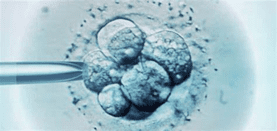 Life commences by way of a single fertilized egg cell which divides into two (mitosis). The two cells divide into four and these four cells divide again giving eight cells and this is known as the eight-cell stage where embryos are taken and frozen for possible future growth to produce children.
Life commences by way of a single fertilized egg cell which divides into two (mitosis). The two cells divide into four and these four cells divide again giving eight cells and this is known as the eight-cell stage where embryos are taken and frozen for possible future growth to produce children.
Image credit Frozen Embryo transfer (FET).
Miraculously, as cells continue to divide, they start to change, a process called cell differentiation and the cells become embryonic stem cells. With further differentiation the stem cells change into a large variety of other cells for example, blood, bone, skin, liver, brain, etc. The bone cells conglomerate and commence to form a backbone as do other like cells conglomerate. After six weeks, a heart is functioning and pumping blood through kilometers of blood vessels. The whole baby is formed completely after three months from conception.
The growing baby is called an embryo from the fourth day after fertilization up until the age of eight weeks, from then on, it is generally referred to as a fetus (foetus).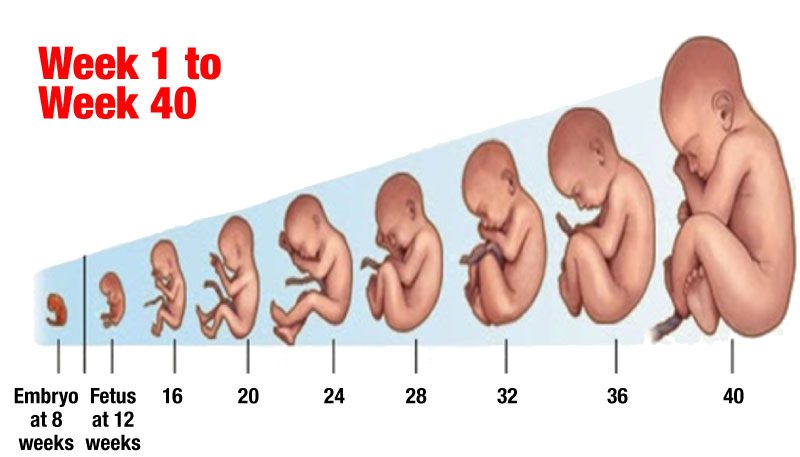
The completeness of a fertilized human egg cell (a Zygote)
A fertilized human egg cell contains 23 chromosomes[1] from the father and 23 chromosomes from the mother making a total of 46. Since chromosomes are bundles of DNA, then the fertilized egg cell has the full complement of human DNA with all the information that will determine the whole person; sex, eyes, hair and skin color, temperament, height, allergies, inherited mutations and all the parameters that make for a unique human being.
The size of the industry
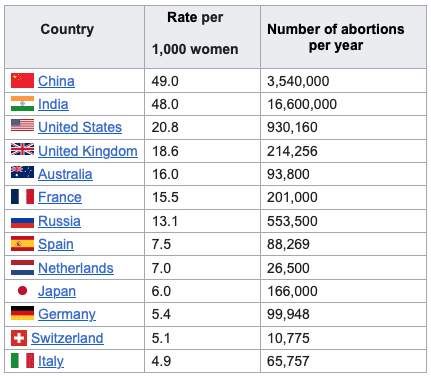 According to the World Health Organization, roughly 73 million induced abortions occur worldwide each year, hence the reference to it being an industry. This corresponds to approximately 200,000 abortions per day and 3 out of 10 (29%) of all pregnancies, end in induced abortion.[2]
According to the World Health Organization, roughly 73 million induced abortions occur worldwide each year, hence the reference to it being an industry. This corresponds to approximately 200,000 abortions per day and 3 out of 10 (29%) of all pregnancies, end in induced abortion.[2]
Rates of abortions differ from country to country as the table shows.[3] The figures are for 2019.
Abortion laws in major countries [4]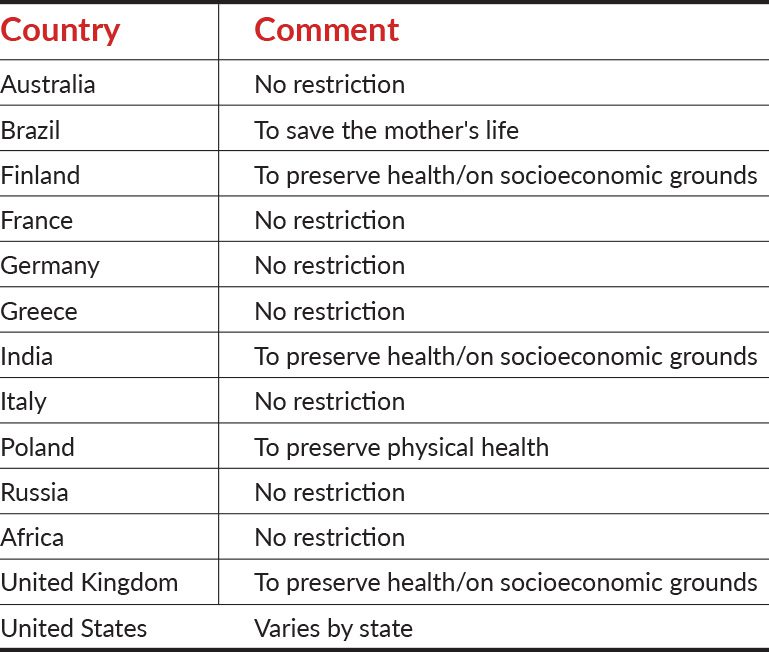
In countries that have no restrictions on abortions, the cost of such is normally borne by the taxpayer and in a sense, making the taxpayer complicit in the procedure. For example, Planned Parenthood, the largest provider of abortions in the United States, received $633.4 million, or almost $1.74 million per day from the US taxpayer for the financial year, 2020-2021.[5]
Is the fetus a person?
What science says
Once fertilization has happened, the zygote contains all the characteristics of the person it will become, as mentioned before, hair, skin, eye color etc. The development of the fetus is not complete until twelve weeks after fertilization and from this point it simply grows. If it were allowed to grow naturally, in 40 weeks it would be born. Consequently, many conclude that a fetus less than twelve weeks old is not physically complete and therefore it is not a person.
What the Bible says
However, the Bible tells it differently. King David wrote under the influence of the Holy Spirit 3,000 years ago in reference to his own birth: Psalm 139:13-16.
13 For you created my inmost being; you knit me together in my mother’s womb. 14 I praise you because I am fearfully and wonderfully made; your works are wonderful, I know that full well. 15 My frame was not hidden from you when I was made in the secret place, when I was woven together in the depths of the earth. 16 Your eyes saw my unformed body; all the days ordained for me were written in your book before one of them came to be.
Here, David is saying that right from conception, God was involved in every aspect of his formation.
Jeremiah 1:5 with God speaking to Jeremiah.
“Before I formed you in the womb I knew you, before you were born, I set you apart; I appointed you as a prophet to the nations.”
Isaiah 49:5
And now the LORD says— he who formed me in the womb to be his servant to bring Jacob back to him and gather Israel to himself,
The Bible makes perfectly clear that God, the Creator, formed each of us in our mother’s womb, and that life begins at conception. Further, from all three passages, God even had a purpose for each life even before each man was conceived.
How abortions are performed
The following is a shortened description of the various abortion procedures used in the US as described by Dr. Anthony Levatino, a practicing obstetrician-gynecologist who had performed over 1,200 abortions before he became pro-life.[6]
Medical abortion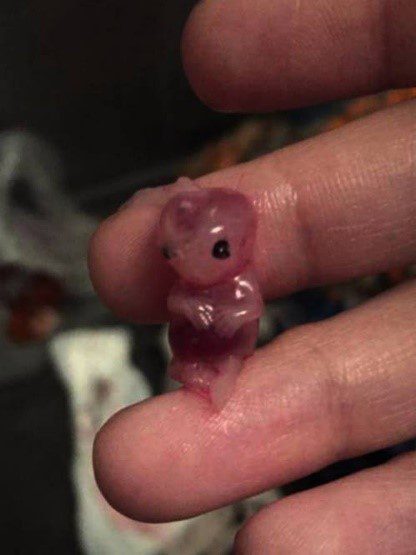
This procedure has been approved by the US FDA for the first seven weeks of pregnancy. It is a two-step procedure where the mother takes a tablet containing mifepristone, commonly known as RU-486. This blocks the action of progesterone from stabilizing the lining of the uterus. It cuts off the supply of blood and nutrients to the baby. Another tablet containing misoprostol is taken within 24-48 hours following the first. The combination of the two drugs causes cramping contractions, and often heavy bleeding to force the now dead fetus out of the woman’s uterus. The process can be very painful with bleeding and contractions lasting from a few hours to several days as the fetus is expelled.
Adverse effects. Bleeding can last 9-16 days, and greater than 30 days. With 8% of women, abdominal pain, nausea, vomiting, diarrhea, headaches, and heavy bleeding are other adverse effects.
The image is of a seven-week-old fetus. Credit: https://www.liveaction.org/news/she-took-abortion-pill-then-saw-her-seven-week-old-baby.
Dilation and curettage (D&C).
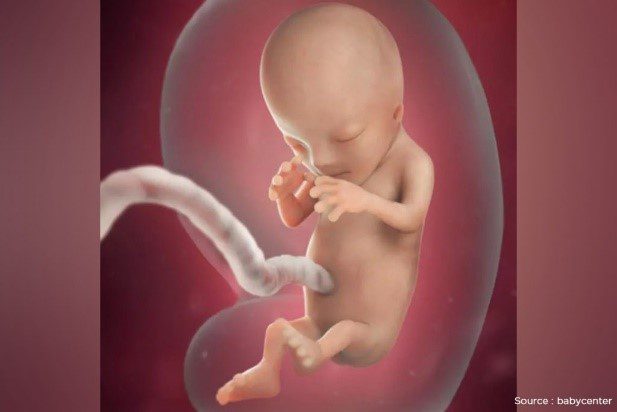 D&C is the most common type of surgical abortion, and it is usually done in the first trimester of pregnancy which is 12 weeks after conception. At this stage, the baby has a heartbeat, fingers, toes, arms, and legs. In this procedure, a thin flexible tube is inserted up the cervical canal and into the uterus, then a very strong vacuum with 10-20 times the suction power of a home vacuum cleaner is applied. The lining of the uterus along with pieces of the fetus and placenta are sucked out. A curette is used to remove any bits of remaining tissue.
D&C is the most common type of surgical abortion, and it is usually done in the first trimester of pregnancy which is 12 weeks after conception. At this stage, the baby has a heartbeat, fingers, toes, arms, and legs. In this procedure, a thin flexible tube is inserted up the cervical canal and into the uterus, then a very strong vacuum with 10-20 times the suction power of a home vacuum cleaner is applied. The lining of the uterus along with pieces of the fetus and placenta are sucked out. A curette is used to remove any bits of remaining tissue.
The image is of a 12-week-old fetus. Credit: BabyCenter.
Adverse effects. The risks with this procedure include perforation and/or laceration of the uterus and cervix, possible damage to intestines, bladder, and nearby blood vessels. Hemorrhage and infection are other risks.
Dilation and evacuation (D&E).
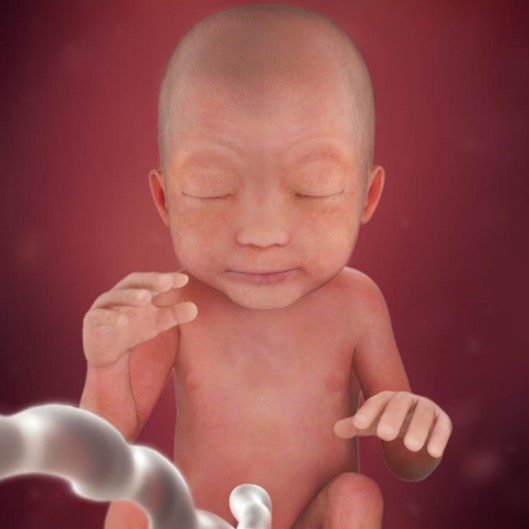 D&E is a second trimester (13-24 weeks) procedure. These babies are larger 18cm (7 inches) and therefore, greater access is required. Under anesthesia, laminaria, a type of seaweed, is inserted in the cervix to enlarge it. This works by the laminaria absorbing water enabling it to swell to several times its original diameter. At this stage of growth, the baby is too big and its bones too hard for it to be dismembered by suction so a sopher clamp is used to pull the baby apart and remove it piece by piece. However, its head must be crushed before it can be removed smoothly. Again, a curette is used to scrape the lining of the uterus of any remaining tissue. The procedure is complete once the baby has been re-assembled, and a check is made to make sure all its pieces have been removed.
D&E is a second trimester (13-24 weeks) procedure. These babies are larger 18cm (7 inches) and therefore, greater access is required. Under anesthesia, laminaria, a type of seaweed, is inserted in the cervix to enlarge it. This works by the laminaria absorbing water enabling it to swell to several times its original diameter. At this stage of growth, the baby is too big and its bones too hard for it to be dismembered by suction so a sopher clamp is used to pull the baby apart and remove it piece by piece. However, its head must be crushed before it can be removed smoothly. Again, a curette is used to scrape the lining of the uterus of any remaining tissue. The procedure is complete once the baby has been re-assembled, and a check is made to make sure all its pieces have been removed.
The image is of a 24-week-old baby. Credit: BabyCenter.
Adverse effects. The risks are the same as for D&C except they are now significant. They can, in extreme cases, lead to death.
Third trimester, 25 weeks to term.
At this point the baby is fully developed and viable outside the womb and the procedure takes 3-4 days to complete.
A large needle is used to inject a drug called digoxin into the baby’s head, torso, or heart through the mother’s abdomen. This causes fatal cardiac arrest which kills the baby. “The baby will feel it,” Levatino says. “Babies at this stage feel pain.”
The mother’s cervix is then opened with sticks of laminaria so the mother can expel her dead baby. She carries the dead baby while she waits for the laminaria to dilate her cervix. This takes two to three days. The next step is for the laminaria to be removed and replaced by a large metal dilator. A second ultrasound may be performed to ensure the baby is dead. If it is still alive, another lethal dose of digoxin is administered. The woman then goes back to wherever she came from to wait for her cervix to dilate and for the dead baby to be expelled.
Adverse effects. Problems can come at this point if the baby is not completely expelled. Medical intervention is required to remove the baby piece by piece and again all the pieces need to be assembled to make sure that all the baby has been removed.
Late term abortions have a high risk of hemorrhage, lacerations, uterine perforations as well as the risk of maternal death.
Born alive.
Although the aim of an abortion is to kill the fetus or baby, some babies are naturally born by way of the mother going into labour before the abortionist can inject a fatal dose of a drug, hence the designation “born alive.”
Most countries and states that have “No restrictions” in their abortion regulations, require that the baby who is born alive must be left unaided until he or she dies.
Dr Johanna Howe, Professor of Law at the University of Adelaide, discussed the situation in Australia in her paper, Fact Sheet Babies born alive and left to die following a failed abortion.[7] She notes that; On average, every week in Queensland and Victoria a baby is born alive and left to die following an abortion. She cites many actual incidents, but provides the testimony of nurse Williams taken from the Northern Territory Coroner’s report into the death of baby Jessica Jane:
Jessica Jane was born alive and placed on a metal kidney dish in an empty room for approximately 80 minutes until she died. According to Nurse Williams who delivered her, Jessica Jane, although premature, was apparently healthy, had no apparent abnormalities and her vital signs were relatively good. Nurse Williams weighed the baby and she was 515 grams. She called the doctor who had authorised the abortion to inform him of the live birth and that the baby’s Agpar scores15 were strong. According to the Coroner, the doctor’s only response was to say ‘so?’ and then he abruptly hung up the phone on her. He gave no instructions to give the baby medical care, and the baby was left to die where she lay. She checked on Jessica Jane every 10-15 minutes and observed crying and movement. According to the Coroner’s report ‘after about an hour her heartbeat and breathing slowed until death at 0405 hours’. Nurse Williams informed the Coroner, ‘I desperately wanted to do more, but felt my hands were tied’.
Allowing the baby to die is a violation of the United Nations Convention on the Rights of the Child, which states; every child has the inherent right to life and further, States Parties shall ensure to the maximum extent possible the survival and development of the child. With 196 states party, the U.N. Convention on the Rights of the Child (CRC) is currently the most ratified international human rights law instrument.[8]
The effect on mothers who have undertaken abortions.
The largest government study, the Report of the South Dakota Task Force,[9]reviewed scientific studies that had been published and heard testimony from medical experts and post-abortive women. The Task Force concluded that there are serious physical and psychological consequences of abortion.
Adverse physical consequences
For an embryo or fetus to be removed by such major intervention as chemical procedures and crude and violent intervention as with high vacuum suction, dismemberment followed by physical removal, physical problems are to be expected. The adverse medical effects have been stated under each of the abortion procedures discussed above.
Deaths
The Abortion Surveillance Report produced by the Centre for Disease Control (CDC), November 27, 2020, covered the 45 years from 1973 through to 2018. It showed that, out of 519 maternal deaths, 86.1% resulted from legal abortion, 11% from illegal abortion, and 2.9% from abortions whose legal status was unknown. The report has shown that death resulting from an abortion is very unlikely, but it is possible.
Psychological disorders
For a living being who is part of its mother, to be killed and violently removed, phycological problems are to be expected. Three examples of how some women have felt are given below and are taken from a report by Bec Whetham.[10]
Jessie O’Brien
While Ms O’Brien still views her decision to abort as a positive one eight years later. However, a “tinge of sadness” stayed with her. “When the physical symptoms subside, you’re still left wondering [about] the what ifs,” She said the conversation and language around abortion had made her termination — and the grief that followed — a hard thing to talk about.
24-year-old Sarah* is less settled with her decision to terminate her pregnancy in 2018. “[I felt] relieved at first just because the morning sickness and the nausea was gone,” Sarah said. “[But] ever since then [it’s been] a lot of regret and so many emotions. “It’s such a complex thing, it’s really hard to translate into words … it’s almost like the longer time goes by, it gets deeper and deeper.”
61-year-old Marie* had her first and last pregnancy in 1979.
Four decades after her abortion, she is coming to terms with the fact she will never be a mother. “When I’d aborted my child, I’d aborted my motherhood, because I never had children [after that]”.
*Names have been changed to protect anonymity.
Suicides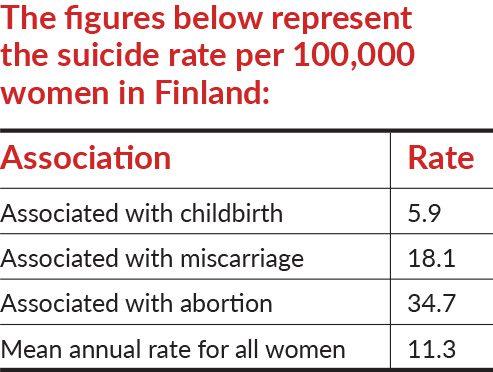
A report by the Life Institute cited three studies in the three countries: Wales, Finland, and the U.S.A. Each showed clearly that abortion increased the risk of suicide. To the contrary, the same research showed that carrying a pregnancy to term greatly reduces that risk.[11]
Finnish study
A major study undertaken by Gissler[12] using data from hospitals and government death certificates, established that the suicide rate in the year following childbirth, and the suicide rate in the year following an abortion, were dramatically different. Their results are summarised below.
Welsh study
A study addressing the link between suicide and abortion was conducted in Wales, between 1991 and 1995 by Morgan and colleagues.[13] They used data from hospital admissions of 408,000 women and compared suicide rates from among women who had abortions, women who had miscarriages and women who gave birth.
They found that women who had induced abortions were 225% more likely to commit suicide than women who had normal deliveries.
US study
Reardon and co-workers[14] compared death certificates with medical records of 173,279 women who underwent a state-funded delivery or induced abortion for the year of 1989. They then, looked at the suicide rate of both groups of women, for a period of four years following their procedure. They found that those women who had their babies aborted were 160% more likely to commit suicide than those women who had given birth to their babies.
What can Christians do about it apart from lobbying government?
Personal contact. Women who are pregnant and are considering having the child they are carrying aborted, do not need criticism and judgement but rather love and compassion. Christians are very good at helping those who have fallen, because we know the depths of our own sin and are so thankful that they are all left at the foot of the cross by way of the completed work of our Lord Jesus Christ. Christians commenced the building of hospitals and still do. It was a Christian who started the Red Cross, the YMCA, Christian Blind Mission, Barnabas Fund, Voice of the Martyrs, and so many other organizations established to help those who were in need. So it is with help to girls who find themselves to be pregnant that Christians could help them to give birth and in doing so, save the life of the baby.
There are Christian organisations that support girls who are pregnant, single mothers and even mothers who are in a relationship but are finding difficulty in having and raising the child. An on-line search under “Pregnancy Support” will bring up many such organisations. All need physical, prayer and financial support.
The Bible has something to say to the Christian doctors, nurses and medical staff who refuse to terminate a human life and risk dismissal and even alienation by colleagues.
Luke 6:22 Blessed are you when people hate you, when they exclude you and insult you and reject your name as evil, because of the Son of Man.
2 Timothy 3:12 In fact, everyone who wants to live a godly life in Christ Jesus will be persecuted.
Romans 8:35 Who shall separate us from the love of Christ? Shall trouble or hardship or persecution or famine or nakedness or danger or sword?
Conclusion
A single fertilized egg cell contains all the information required to construct a unique person with all his/her inherited features and this will happen if the cell is allowed to grow to maturity and be born. And each one is an image bearer of the Lord God (Genesis 1:27).
[1] Chromosomes are bundles of DNA. Humans have 46 chromosomes. All plant and animal life have most of their DNA stored in chromosomes, but each has a different amount of them.[2] https://worldpopulationreview.com/country-rankings/abortion-rates-by-country.
[3] https://en.wikipedia.org/wiki/List_of_countries_by_abortion_statistics.
[4] https://worldpopulationreview.com/country-rankings/countries-where-abortion-is-illegal.
[5] https://lozierinstitute.org/fact-sheet-planned-parenthoods-2020-2021-annual-report.
[6] https://www.youtube.com/watch?v=CFZDhM5Gwhk.
[7] These are the only two Australian states that that release fulsome data on babies born alive following a failed abortion. https://www.hli.org/resources/post-abortion-stress-syndrome.
[8] https://www.humanium.org/en/convention/signatory-states.
[9] https://www.dakotavoice.com/Docs/South%20Dakota%20Abortion%20Task%20Force%20Report.pdf.
[10] https://www.abc.net.au/news/2021-07-10/women-who-experience-post-abortion-grief-say-pain-unrecognised/13186692.
[11] Life Institute, https://thelifeinstitute.net/learning-centre/abortion-effects/suicide-after-abortion.
[12]Gissler et al, “Suicides after pregnancy in Finland, 1987-1994, register linkage study,” British Medical Journal 1996 December 7, 313(7070): 1431-4.
[13] Morgan et al, “Suicides after pregnancy, Mental health may deteriorate as a direct effect of induced abortion,” British Medical Journal, 1997 Mar 22, 314 (7084);
902-3.
[14] Reardon D C, Ney P G, Scheurer F J, “Suicide Deaths Associated with Pregnancy Outcome: A Record Linkage Study of 173,279 low income American women,” Archives of Women’s Mental Health 2001, 3 (4) Suppl 2:104.
